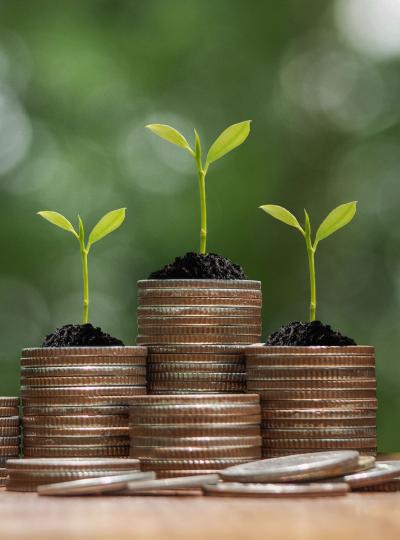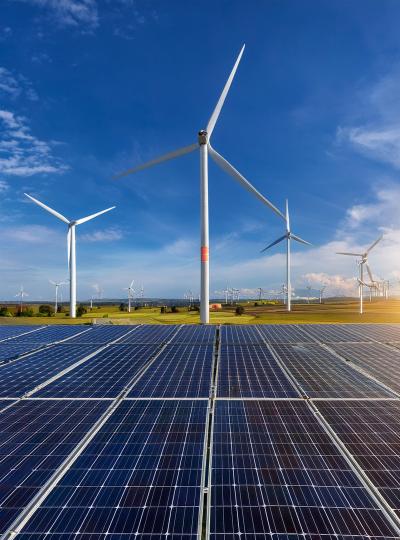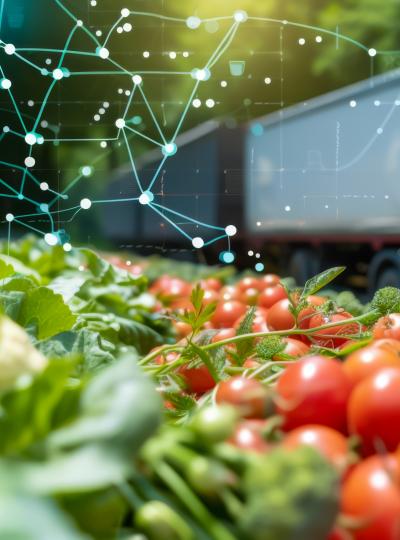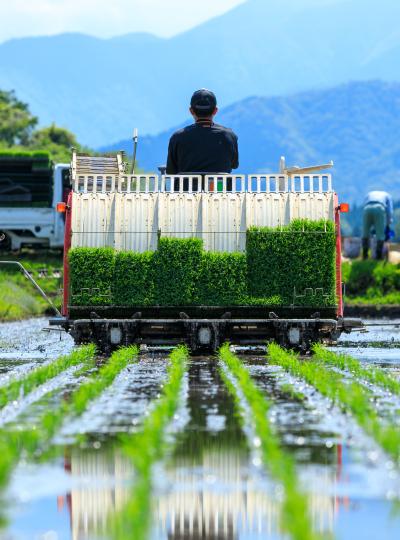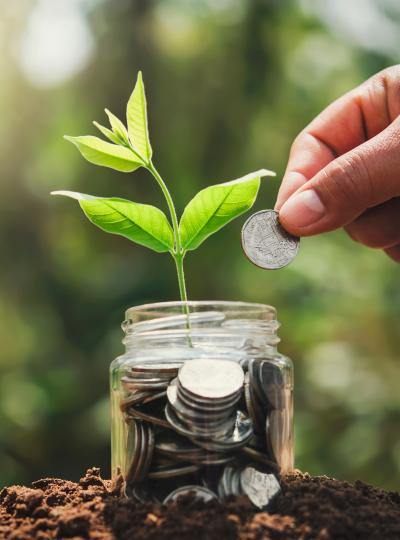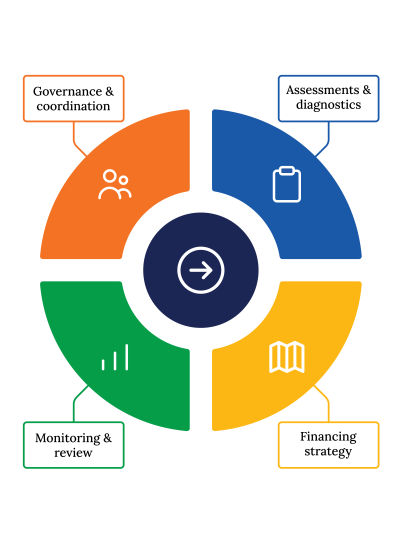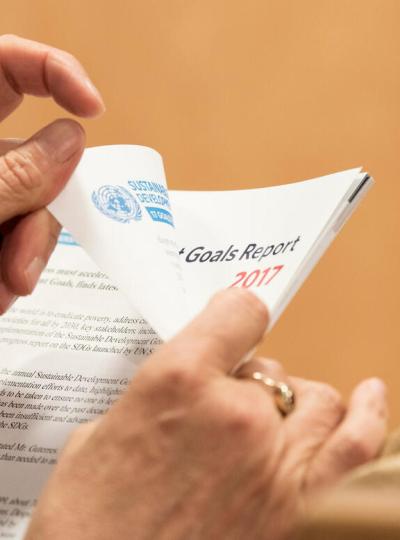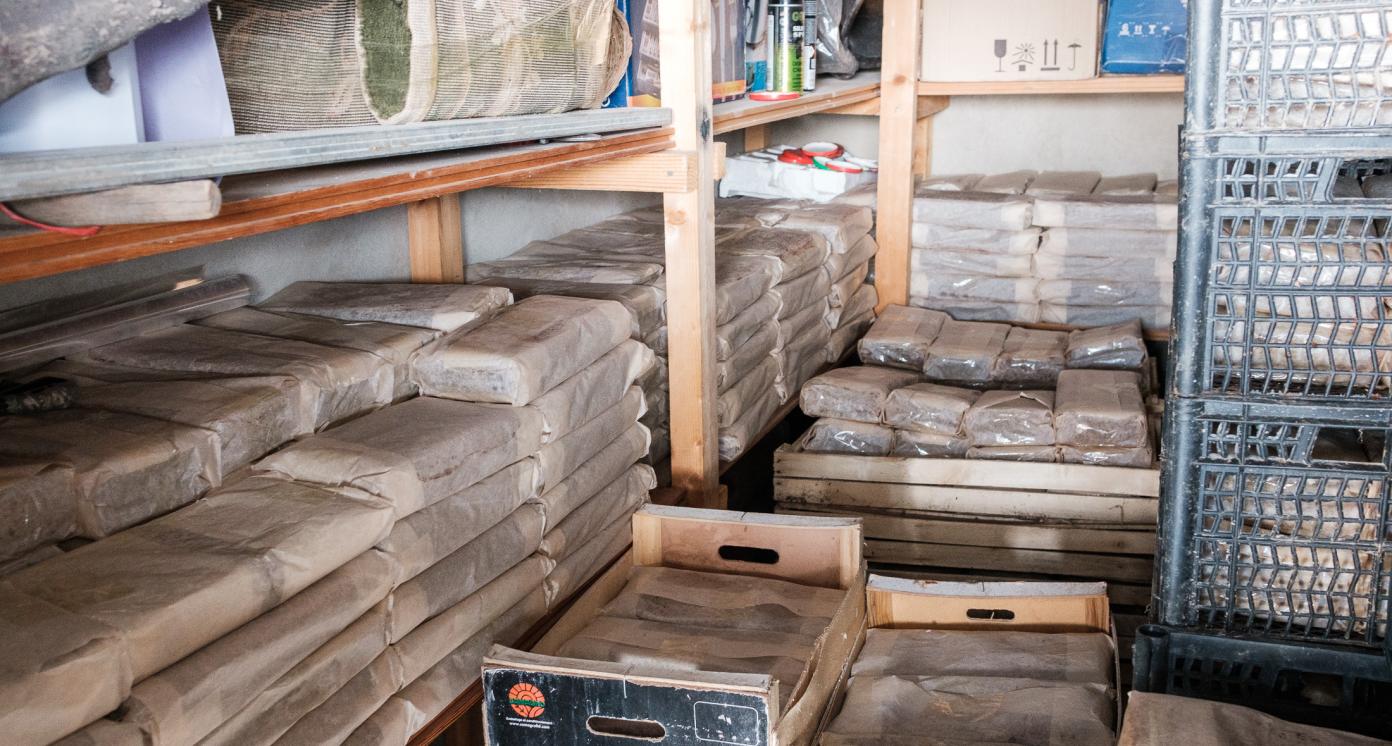Logistics and Storage Facilities
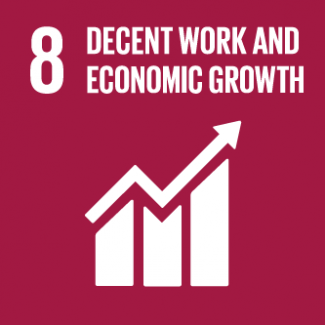
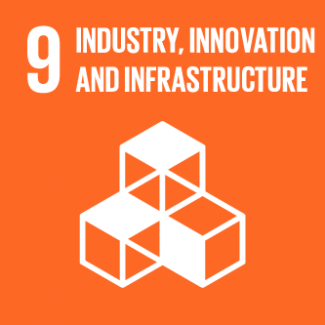
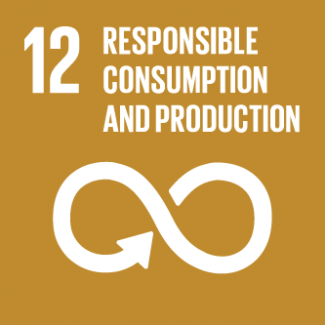
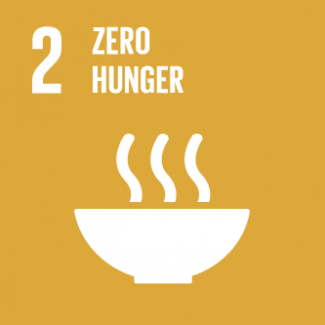
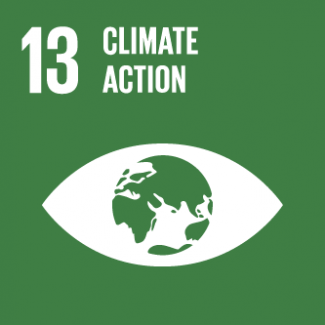
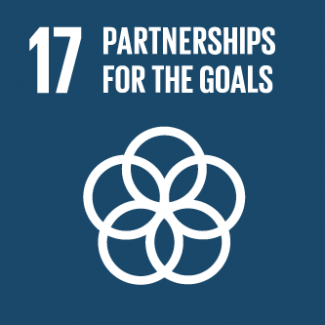
Business Model Description
Invest in the construction and operation of inter-regional logistics centres and agro-industrial complexes on the basis of agricultural clusters with storage facilities, including cold storage, that provide a controlled environment for storing processed and raw fruit and vegetables such as potato, beet, apricots, berries, grapes, plumps, apples, and generate revenues through direct sales of turnkey objects, leasing, and long-term subscription agreements.
Expected Impact
Improve domestic food supply and minimize post-harvest losses, stabilize food prices by securing agricultural output, and by increasing exports.
How is this information gathered?
Investment opportunities with potential to contribute to sustainable development are based on country-level SDG Investor Maps.
Disclaimer
UNDP, the Private Finance for the SDGs, and their affiliates (collectively “UNDP”) do not seek or solicit investment for programmes, projects, or opportunities described on this site (collectively “Programmes”) or any other Programmes, and nothing on this page should constitute a solicitation for investment. The actors listed on this site are not partners of UNDP, and their inclusion should not be construed as an endorsement or recommendation by UNDP for any relationship or investment.
The descriptions on this page are provided for informational purposes only. Only companies and enterprises that appear under the case study tab have been validated and vetted through UNDP programmes such as the Growth Stage Impact Ventures (GSIV), Business Call to Action (BCtA), or through other UN agencies. Even then, under no circumstances should their appearance on this website be construed as an endorsement for any relationship or investment. UNDP assumes no liability for investment losses directly or indirectly resulting from recommendations made, implied, or inferred by its research. Likewise, UNDP assumes no claim to investment gains directly or indirectly resulting from trading profits, investment management, or advisory fees obtained by following investment recommendations made, implied, or inferred by its research.
Investment involves risk, and all investments should be made with the supervision of a professional investment manager or advisor. The materials on the website are not an offer to sell or a solicitation of an offer to buy any investment, security, or commodity, nor shall any security be offered or sold to any person, in any jurisdiction in which such offer would be unlawful under the securities laws of such jurisdiction.
Country & Regions
- Kyrgyzstan: Chui Oblast
- Kyrgyzstan: Issyk-Kul Oblast
- Kyrgyzstan: Jalal-Abad Oblast
- Kyrgyzstan: Osh Oblast
Sector Classification
Food and Beverage
Development need
Kyrgyzstan is highly dependent on imported food due to low productivity and output in the food sector. The country is a net importer of meat and depends on imports of fats, oil, and sunflower seeds, over 90% of which comes from Russia, Belarus or Ukraine. In 2023, 30% of the population lived below the poverty line, spending over 60% of the income on basic food needs (1, 2, 3, 4).
Policy priority
The Programme for the development of the food and processing industry during 2023-2027 aims to ensure food security, efficient use of raw materials, provision of government lending, and attracting investments in the sector. The National Development Strategy until 2026 emphasizes the role of medium and large processing complexes and logistics centres for boosting export (5, 6).
Gender inequalities and marginalization issues
The gender-segregated data on land ownership is limited and outdated but reveals that women report themselves as agricultural land owners less often than men. Despite equal legal rights to land resources between men and women, women tend to be excluded from land governance and decision-making (7).
Investment opportunities introduction
In 2023, the food industry, including beverage and tobacco production, has generated approximately USD 830 million in output. The main opportunities in the food sector lie in sugar production, tobacco-fermentation plants, horticultural processing, meat processing, and logistics centres (8, 9).
Key bottlenecks introduction
Climate change, affecting agricultural outputs and prices, supply-chain shocks caused by the COVID-19 pandemic and conflict between Eastern European countries, which are major food importers to Kyrgyzstan, significantly affected the development of food and beverage sector in recent years (1, 4, 10).
Food and Agriculture
Development need
Post-harvest losses remain significant, with 30-40% of produce lost during collection, transportation, and storage processes. Despite being a livestock country, 87% of pastures in Kyrgyzstan are degraded at least one season per year. Limited access to high-quality seeds contributes to low seed replacement rates, resulting in reduced yields of fodder and feed crops (11, 12).
Policy Priority
Nationally Determined Contributions (NDC) target reducing agricultural greenhouse gas emissions by optimizing livestock numbers, enhancing pedigree stock, expanding organic crop farming, and increasing manure use as fertilizer. The 2024-2028 Green Economy Programme promotes resource-efficient, eco-friendly farming (13, 14).
Gender inequalities and marginalization issues
The rural population predominates in Kyrgyzstan, with nearly 65% living in rural areas. Of these, 20% are engaged in agriculture and the majority work informally. In 2021, one in three, or 35%, informally employed women worked in agriculture (11, 15).
Investment opportunities introduction
In 2023, foreign direct investments in agriculture amounted to USD 667,000. Bank loans in the sector increased by 11.6% in 2024, reaching KGS 47 billion (USD 649 million). There are opportunities to invest in storage facilities, berry growing, fish breeding, dairy farms and cheese production, trout farming, and organic production (16, 17, 18).
Key bottlenecks introduction
Low levels of skills in land management, harvest techniques, animal husbandry and veterinary practices, as well as obsolete agricultural equipment significantly hinder the sector’s development (11).
Agricultural Products
Pipeline Opportunity
Logistics and Storage Facilities
Invest in the construction and operation of inter-regional logistics centres and agro-industrial complexes on the basis of agricultural clusters with storage facilities, including cold storage, that provide a controlled environment for storing processed and raw fruit and vegetables such as potato, beet, apricots, berries, grapes, plumps, apples, and generate revenues through direct sales of turnkey objects, leasing, and long-term subscription agreements.
Business Case
Market Size and Environment
< USD 50 million
58,000 square meters
As of 2024, there were 58,000 square meters of storage facilities in Kyrgyzstan. The average cost of one square metre of storage facility in Kyrgyzstan amounted to USD 60 annually in 2022. Thus, the market size of the storage facilities in Kyrgyzstan can be estimated at roughly USD 3.48 million p.a. (21, 22).
Central Asia faces a warehouse space deficit of 20 million square metres (m2). Kyrgyzstan plans to establish a series of large-scale facilities, totaling 332,000 m2 (21).
Indicative Return
> 25%
A benchmark project for constructing a 10,000-ton logistics centre in Kyrgyzstan, aimed at food storage and processing with an investment of USD 5 million, demonstrates an internal rate of return (IRR) of 34.45% over five years (23).
Investment Timeframe
Short Term (0–5 years)
A benchmark project for constructing a 10,000-ton logistics center in Kyrgyzstan, aimed at food storage and processing with an investment of USD 5 million, demonstrates a payback period of 1.63 years (23).
Ticket Size
USD 1 million - USD 10 million
Market Risks & Scale Obstacles
Market - High Level of Competition
Business - Supply Chain Constraints
Market - Highly Regulated
Impact Case
Sustainable Development Need
The agriculture sector faces challenges from inadequate storage, transportation, and cold-processing infrastructure, causing over one-third of produce losses during collection and transit. Kyrgyzstan ranks 123rd out of 160 countries on the Logistics Performance Index (24, 25).
The supply shocks caused by the COVID-19 pandemic and the Russian-Ukrainian war significantly affected food prices in Kyrgyzstan, a country highly dependent on food imports such as wheat, necessitating the creation of storage facilities (26).
Gender & Marginalisation
The rural population, which makes up 65% of the employed population in the agricultural sector, is among the first to suffer from post-harvest losses, income loss, and food insecurity (11).
Expected Development Outcome
Logistics and storage facilities extend the expiration date of agricultural products, minimising post-harvest losses.
Logistics and storage facilities enhance national food security by extending product shelf life and enabling the establishment of strategic food reserves.
Logistics and storage facilities contribute to strengthening the food supply to the country, thus reducing the fluctuations of prices during shocks.
Gender & Marginalisation
Logistics and storage facilities mitigate post-harvest losses for rural populations and farmers, fostering an income safety net while enhancing food security in remote communities.
Primary SDGs addressed

8.2.1 Annual growth rate of real GDP per employed person
In 2022, the annual growth rate of real GDP per employed person was 109.27% (27).
110 by 2028 (14).

9.1.1 Proportion of the rural population who live within 2 km of an all-season road
9.1.2 Passenger and freight volumes, by mode of transport
78.8 in 2024 (39).
In 2023, the freight volumes reached 2985.3 ton-kilometres and 11350.7 kilometres in Kyrgyzstan (28).

12.3.1 (a) Food loss index and (b) food waste index
Secondary SDGs addressed



Directly impacted stakeholders
People
Gender inequality and/or marginalization
Planet
Corporates
Public sector
Indirectly impacted stakeholders
Planet
Outcome Risks
Failure to adhere to proper sanitation practices and maintain appropriate storage temperatures can pose significant health risks to the population and jeopardize food security.
Unsustainable cold chain technologies are a cause of high levels of emissions globally, which can also negatively impact Kyrgyzstan's ecosystems (40).
Impact Risks
Prolonged inspections at border crossing points may lead to cargo transport bypassing Kyrgyzstan, thereby significantly reducing the effectiveness and potential impact of the business model (29).
High construction costs for storage and logistics facilities may disproportionately affect rural populations, who often face financing challenges, hence limiting their access to market infrastructure.
Poor road networks and inadequate transportation infrastructure in the remote areas of Kyrgyzstan can hinder access to storage facilities for farmers and rural communities.
Impact Classification
What
Logistics and storage facilities decrease price fluctuations and improve food security, secure agricultural output, and contribute to increased exports.
Who
The general public, rural population, agricultural processors, and the government benefit from improved storage and logistics capacities of the country.
Risk
Prolonged border delays, high construction costs, and poor transportation infrastructure may hinder the impact of the development of logistics and storage facilities.
Contribution
Logistics and storage facilities can address 30-to-40%-level post-harvest losses and increase domestic food supply, that is otherwise replaced by imports (11).
How Much
The development of trade and logistics centres could reduce food loss by up to 20% (30).
Impact Thesis
Improve domestic food supply and minimize post-harvest losses, stabilize food prices by securing agricultural output, and by increasing exports.
Enabling Environment
Policy Environment
National Development Strategy of the Kyrgyz Republic for 2018-2040, 2018: prioritizes developing logistics centres for exporting products to foreign markets as a part of the objective to develop exporting capacities in the country (5).
Programme for Developing the Food and Processing Industry with Cluster Development, 2023-2027, 2023: prioritizes the construction of logistics centres and wholesale distribution points for the collection of fruit and vegetables (6).
Programme for the Creation and Development of Trade and Logistics Centers for Agricultural Products, 2019-2023: aims to ensure favourable conditions for agricultural producers by increasing their competitiveness and export potential (30).
Financial Environment
Financial incentives: In 2025, the government plants to provide five types of credits for trade and logistics centres, including for the purpose of aggregation and/or collection of fruit and vegetable products and for cold storage, allocating USD 40 million (35).
Regulatory Environment
Law No. 166 On the development of agriculture in the Kyrgyz Republic, 2009: regulates entities' relations to develop the agro-food sector and identifies trade and logistics centres as a means to implement innovative technologies in agriculture (31).
Law No. 183 On food security of the Kyrgyz Republic, 2008: stipulates that the main direction of the government support is financing of research programs for the development of storage and rational use of food products among others (32).
Law No. 66 On investments, 2003: establishes the basic principles of the state investment policy, providing fair, equal legal treatment to investors and guaranteeing the protection of their investments in the economy of the Kyrgyz Republic (33).
Law No. 98 On the public-private partnership, 2021: provides definitions of the parties participating in PPP projects, their roles and responsibilities, allowing for opportunities for VAT exemptions and tax deferment, a moratorium on inspections for up to 3 years, and other benefits (34).
Marketplace Participants
Private Sector
Nomading, Oberon LLC, Nova Home, Stroyka, Bishkek Temir.
Government
Ministry of Water Resources, Agriculture, and Processing Industry, Ministry of Economy and Commerce, National Investments Agency, PPP Center.
Multilaterals
Food and Agriculture Organization (FAO), Asian Development Bank (ADB), World Bank, Delegation of the European Union to the Kyrgyz Republic.
Public-Private Partnership
In 2024, the National Investment Agency announced a tender to build a customs and logistics complex in the At-Bashy district of Naryn region. The project involves financing, designing, constructing, and operating the complex under a public-private partnership (36).
Target Locations
Kyrgyzstan: Chui Oblast
Kyrgyzstan: Issyk-Kul Oblast
Kyrgyzstan: Jalal-Abad Oblast
Kyrgyzstan: Osh Oblast
References
- (1) World Food Programme. 2021. Food Security Situation in the Kyrgyz Republic. https://www.fsinplatform.org/sites/default/files/resources/files/WFP-0000124521.pdf
- (2) UNDP. 2023. Development Finance Assessment. https://www.undp.org/kyrgyzstan/publications/development-finance-assessment-kyrgystan
- (3) National Statistical Committee of the Kyrgyz Republic. 2023. Number of households with expenditure below subsistence level. https://stat.gov.kg/en/statistics/download/dynamic/538/
- (4) World Bank Group. 2022. Agrifood trade and food security in Central Asia: Possible implications of the war in Ukraine. https://documents1.worldbank.org/curated/en/099614301182328659/pdf/IDU099aa8f43031360476b0ba0e0c5517feb727f.pdf
- (5) The Government of the Kyrgyz Republic. 2018. National Development Strategy of the Kyrgyz Republic for 2018-2040. https://www.fao.org/faolex/results/details/en/c/LEX-FAOC203822/
- (6) Правительство Кыргызской Республики. 2023. Программа развития пищевой и перерабатывающей промышленности Кыргызской Республики на 2023-2027 годы с применением кластерного развития. https://cbd.minjust.gov.kg/53-339/edition/1035/ru
- (7) CIFOR-ICRAF, IFAD. 2023. Women's Land Rights in the Kyrgyz Republic. https://www.cifor-icraf.org/publications/pdf_files/Books/Socio-legal-review-Kyrgyz.pdf "8) National Statistical Committee of the Kyrgyz Republic. 2023. Volume of industrial goods production by types of economic activity. https://stat.gov.kg/en/opendata/category/361/"
- (9) Национальное агенство по инвестициям при Президенте Кыргызской Республики. 2021. Инвестиционные проекты в сфере сельского хозяйства. https://invest.gov.kg/Инвестиционные-проекты-в-сфере-сельхоз-РУС.pdf
- (10) Asian Development Bank. 2020. COVID-19 pandemic impacts on food security in Central and West Asia. Key issues and strategic options. https://www.adb.org/sites/default/files/publication/656091/cwwp-009-covid-19-impacts-food-security.pdf
- (11) IFAD. 2021. COSOP results review. https://www.ifad.org/en/w/corporate-documents/regions-countries/kyrgyzstan-cosop-results-review-2021
- (12) IFAD, FAO. 2023. Low carbon and resilient livestock development in Kyrgyzstan. https://openknowledge.fao.org/server/api/core/bitstreams/3e8893c7-5e23-4890-8b38-b1d65538322b/content#:~:text=The%20new%20IFAD%20project%20would,reducing%20the%20overall%20quantity%20needed.
- (13) The Government of the Kyrgyz Republic. 2021. Updated Nationally Determined Contributions 2021. https://unfccc.int/sites/default/files/NDC/2022-06/%D0%9E%D0%9D%D0%A3%D0%92%20ENG%20%D0%BE%D1%82%2008102021.pdf
- (14) Министерство Кыргызской Республики. 2024. Программа развития зеленой экономики в Кыргызской Республике на 2024-2028 годы (Проект). https://mineconom.gov.kg/froala/uploads/file/3bd5db922cf87fc28a0f3cbeced8e2bbe286956c.pdf
- (15) UN Women. 2023. Sustainable Development Goals and Gender in the Kyrgyz Republic. https://data.unwomen.org/sites/default/files/documents/Publications/2023/Kyrgyz-SDG-gender.pdf
- (16) National Statistical Committee of the Kyrgyz Republic. 2023. Foreign Investment in 2023. https://stat.gov.kg/en/statistics/download/operational/1763/
- (17) National Bank of the Kyrgyz Republic. 2024. Trends of banking sector development. https://www.nbkr.kg/index1.jsp?item=80&lang=RUS
- (18) National Investments Agency under the President of the Kyrgyz Republic. 2021. Investment projects. https://invest.gov.kg/ru/2021/12/07/test/
- (19) Stakeholder consultations with a private sector company operating in the construction of logistics and storage facilities, September 2024.
- (20) Nova home. 2024. [Home page]. https://domovoi.kg/
- (21) Economist.kg. 2024. Транзитные перевозки стали двигателем экономики и источником пополнения бюджета - обзор. https://economist.kg/mnenie/2024/01/10/skladskoi-rynok-kyrghyzstana-zhdiet-20-kratnyi-rost-ploshchadiei-klassa-a-ekspiert/
- (22) Akchabar. 2022. В КР под склады сдается больше 30 тысяч квадратных метров. https://www.akchabar.kg/ru/news/v-kr-pod-skladi-sdaetsya-bolshe-30-tisyach-kvadratnikh-metrov-pakylqmueemhiunj
- (23) Национальное агенство по инвестициям при Президенте Кыргызской Республики. 2022. Проект строительства логистического центра. Общество с ограниченной ответственностью "Мираж". https://invest.gov.kg/wp-content/uploads/2021/12/13-1.pdf
- (24) Ministry of Agriculture, Food Industry and Land Reclamation of the Kyrgyz Republic. 2021. Concept of agrarian development of the Kyrgyz Republic for 2021-2025. http://admin.koomtalkuu.gov.kg/uploads/npa_versions/6141ebd0033fa1.48745238.pdf
- (25) World Bank. 2023. Connecting to Compete. Trade Logistics in the Global Economy. https://lpi.worldbank.org/sites/default/files/2023-04/LPI_2023_report.pdf
- (26) World Bank Group. 2022. Agrifood trade and food security in Central Asia: Possible implications of the war in Ukraine. https://documents1.worldbank.org/curated/en/099614301182328659/pdf/IDU099aa8f43031360476b0ba0e0c5517feb727f.pdf "27) Национальный статистический комитет Кыргызской Республики. 2022. Ежегодные темпы роста реального ВВП на каждого занятого (показатель 8.2.1). https://sustainabledevelopment-kyrgyzstan.github.io/8-2-1/"
- (28) Национальный статистический комитет Кыргызской Республики. 2023. Объем пассажирских и грузовых перевозок в разбивке по видам транспорта. https://sustainabledevelopment-kyrgyzstan.github.io/9-1-2/ "29) UNECE. 2020. Logistics and Transport Competitiveness in Kyrgyzstan. https://unece.org/sites/default/files/2022-02/ECE-TRANS-291e-Web%20-%20Corr_0.pdf "
- (30) Правительство Кыргызской Республики. 2019. Программа по созданию и развитию торгово-логистических центров сельскохозяйственной продукции в Кыргызской Республике на 2019-2023 годы. https://cbd.minjust.gov.kg/14321/edition/955430/ru
- (31) Правительство Кыргызской Республики. 2009. Закон Кыргызской Республики от 26 мая 2009 года №166 О развитии сельского хозяйства Кыргызской Республики. https://cbd.minjust.gov.kg/202555/edition/1213000/ru
- (32) Правительство Кыргызской Республики. 2008. Закон Кыргызской Республики от 4 августа 2008 года №183 О продовольственной безопасности Кыргызской Республики. https://cbd.minjust.gov.kg/202397/edition/1244333/ru
- (33) Правительство Кыргызской Республики. 2003. Закон Кыргызской Республики от 27 марта 2003 года №66 Об инвестициях в Кыргызской Республике. https://cbd.minjust.gov.kg/1190/edition/8226/ru
- (34) Правительство Кыргызской Республики. 2021. Закон Кыргызской Республики от 11 августа 2021 года №98 О государственно-частном партнерстве. https://cbd.minjust.gov.kg/112275/edition/1077389/ru
- (35) Министерство водных ресурсов, сельского хозяйства и перерабатывающей промышленности Кыргызской Республики. 2024. Рассматриваются кредиты на строительства логистического центра, холодильных складов на 2025 год. https://agro.gov.kg/ru/20853/
- (36) 24.kg. 2024. В Нарынской области планируют построить логистический центр. Объявили тендер. https://24.kg/ekonomika/309855_vnaryinskoy_oblasti_planiruyut_postroit_logisticheskiy_tsentr_obyyavili_tender/
- (37) Национальный статистический комитет Кыргызской Республики. 2023. Реализация основных видов сельскохозяйственной продукции по территории. https://stat.gov.kg/ru/statistics/download/dynamic/355/
- (38) Министерство Экономики и коммерции Кыргызской Республики. 2019. Обращение граждан и предпринимателей. Торгово-логистические центры (ТЛЦ). https://mineconom.gov.kg/ru/question/31
- (39) SDG Index Dashboard. 2024. Kyrgyz Republic. https://dashboards.sdgindex.org/static/profiles/pdfs/SDR-2024-kyrgyz-republic.pdf
- (40) UN Environment Programme. 2022. Amid food and climate crises, investing in sustainable food cold chains crucial. https://www.unep.org/news-and-stories/press-release/amid-food-and-climate-crises-investing-sustainable-food-cold-chains

